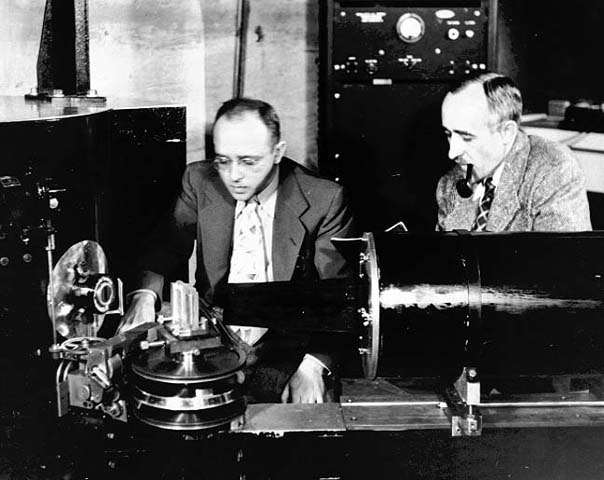Ernest Omar Wollan was a physicist who helped pioneer the fields of health physics and neutron diffraction.
Wollan received his B.A. from Concordia College in 1923 and his Ph.D. in Physics from the University of Chicago in 1929 under the supervision of Arthur Compton. In 1932, Wollan traveled to the Arctic Circle and Zurich to perform cosmic ray research on a National Research Council Fellowship. After returning to the United States, Wollan became a professor of physics at Washington University in St. Louis before starting work at the Chicago Tumor Institute with Compton.
When the Metallurgical Laboratory started to take shape, Compton invited Wollan to join him in Chicago. His initial responsibility was to determine the shielding requirements for the proposed Chicago Pile-1. Wollan also set up an experiment to measure the gamma ray ionization levels as the pile became critical. Wollan was then tasked with assembling and leading a group of scientists specializing in radiation protection, which would become the “health physics section” of the lab’s Health Division. Wollan was the first person to use the title “health physicist.” The group’s initial focus was designing tools to measure radiation exposure. This led to a number of new devices, including the standardized film badge, invented by Wollan.
In 1944, Wollan and his health physics group moved to Oak Ridge. As the group set up a program of radiation safety, Wollan turned his attention back to physics. The X-10 graphite reactor was producing streams of slow neutrons, which were known to have a wave structure that would allow their refraction. Wollan adapted an old x-ray diffractometer to measure the neutron diffraction, helping lay the groundwork for future research in neutron spectrometry. Such techniques, for instance, were used in Wollan and Clifford Shull’s discovery of antiferromagnetism.
Wollan stayed at Oak Ridge for twenty-three years, where he became the Associate Director of the Physics Division. He retired from the lab in 1967, but remained a consultant for another ten years.
Wollan died on March 11, 1984. Ten years later, the Nobel Prize was awarded in part to Clifford Shull for his role in developing Wollan’s neutron diffraction technique. The Nobel Prize cannot be awarded posthumously, and thus Wollan never received the Nobel Prize for his work.





